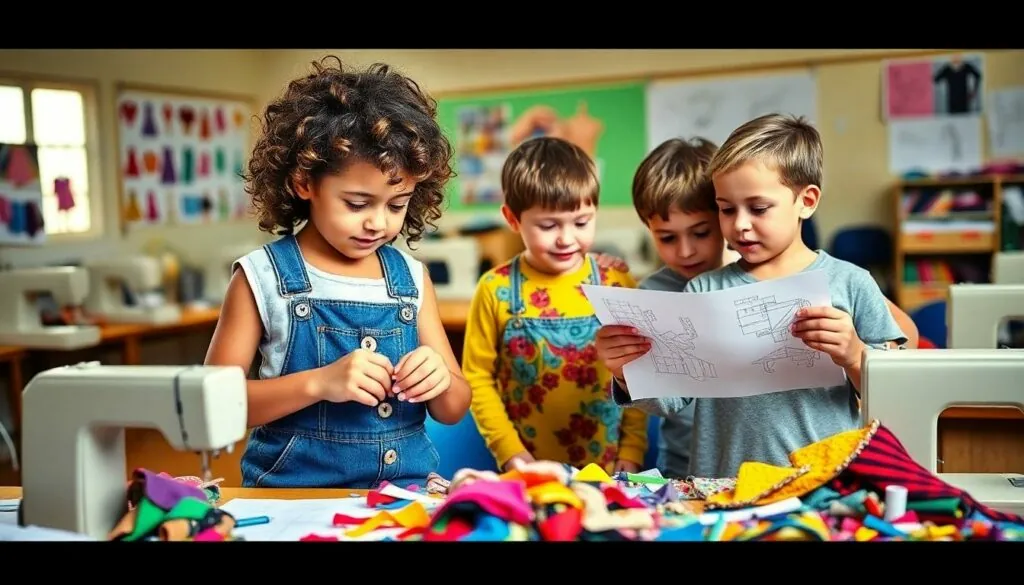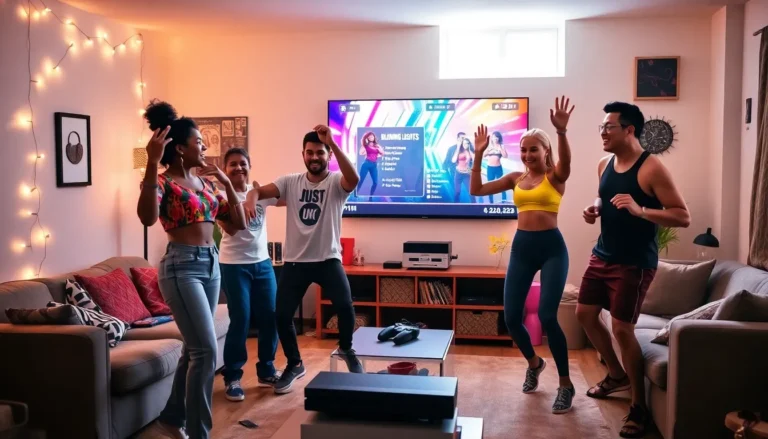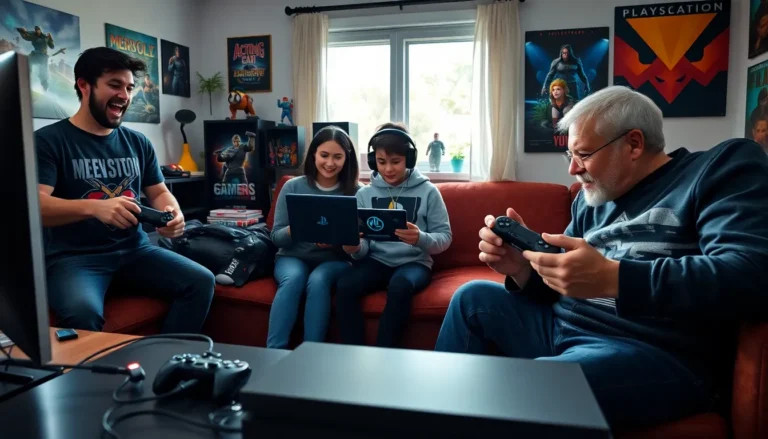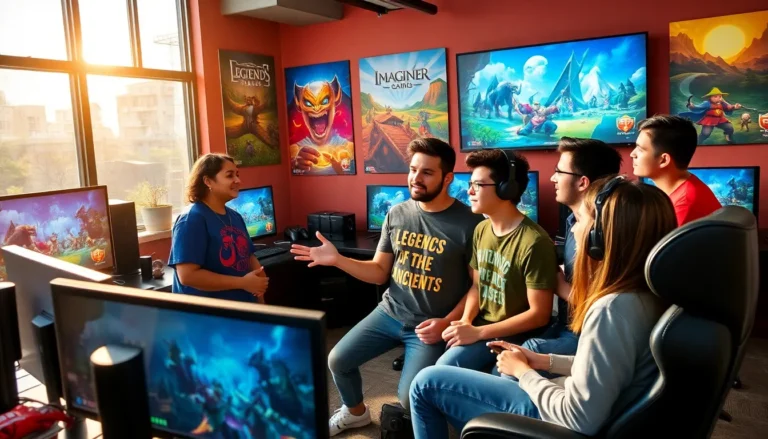Table of Contents
ToggleFashion isn’t just for runway models and red carpet events; it’s a world where creativity knows no bounds. Imagine a place where kids can unleash their inner designers, turning fabric scraps into fabulous outfits. Fashion design classes for kids offer just that—a colorful playground for young imaginations to run wild.
Overview of Fashion Design Classes for Kids
Fashion design classes offer children opportunities to unleash their creativity. These classes serve as nurturing environments where young designers turn fabric scraps into personal creations.
Importance of Early Fashion Education
Early exposure to fashion education fosters creativity in children. Engaging in fashion design allows kids to explore their artistic instincts. Learning about colors, patterns and textures cultivates an appreciation for aesthetics. Kids who start young develop problem-solving skills when creating garments. They also gain confidence as they share their designs with others. Introducing fashion concepts early sets the foundation for lifelong creativity.
Benefits of Learning Fashion Design
Learning fashion design equips children with valuable skills. Problem-solving skills develop as they navigate project challenges. Communication abilities improve through discussions about their works. Time management skills enhance as children balance multiple tasks in design projects. Learning to work with various materials boosts their adaptability. Fashion design encourages teamwork during group projects, fostering collaboration. Ultimately, these skills translate to other areas of life, contributing to well-rounded development.
Types of Fashion Design Classes
Various fashion design classes cater to kids, providing different methods of learning. Each type contributes to creativity and design skills.
Online Classes
Online classes offer flexibility for young learners. They allow kids to access fashion design education from home. Courses often include video tutorials and interactive projects. Students can collaborate with peers across different locations. Many platforms provide access to industry professionals, enhancing the learning experience. These classes often incorporate design software training, which is essential for modern fashion careers. Scheduling is typically convenient, accommodating various time zones and commitments.
In-Person Workshops
In-person workshops create hands-on experiences for aspiring young designers. Kids engage with instructors directly and participate in collaborative projects. These classes usually focus on practical skills like sewing and fabric manipulation. Social interaction enriches the learning atmosphere, fostering teamwork. Many local community centers or art schools host these workshops, making them accessible. Equipment and materials are often provided, enabling focused learning without additional costs. Each session typically culminates in a project showcase, allowing kids to present their work.
What to Expect in a Fashion Design Class
Fashion design classes provide an exciting learning environment for kids to explore their creativity. Students engage in hands-on projects that introduce various aspects of fashion design.
Curriculum Overview
A typical curriculum in fashion design classes includes a blend of theoretical knowledge and practical experience. Students learn the basics of sketching designs, selecting fabrics, and understanding color theory. They explore different styles and trends that shape the fashion world. Course materials often feature lessons on sewing techniques and pattern-making. Activities may involve collaborative projects, allowing students to work together on design concepts. Workshops emphasize the importance of critical thinking and planning in the design process.
Skills Developed
Students in fashion design classes develop a range of valuable skills. Problem-solving abilities enhance as they navigate design challenges. Creativity flourishes when they experiment with different materials and concepts. Communication skills improve through teamwork and presentations of their projects. Time management becomes essential as students balance multiple assignments and deadlines. Adaptability is fostered when facing new design tasks or feedback. Overall, these classes promote well-rounded skill development that extends beyond fashion.
Choosing the Right Class for Your Child
Selecting a suitable fashion design class requires careful consideration. Parents should assess their child’s interests and learning style before making a decision.
Factors to Consider
Age plays a crucial role in choosing the right program. Many classes cater to specific age groups, ensuring appropriate content and skill levels. Skill level also matters; beginners often need more foundational courses, while experienced kids can engage in advanced workshops. Assessing your child’s availability can provide insight, as class schedules vary. Class sizes may impact the learning experience too; smaller groups often ensure more individualized attention. Curriculum focus can differ among programs, featuring sewing techniques, design theory, or fashion history. Researching each option allows parents to find a fit that resonates with their child.
Recommended Programs
Several programs excel in offering engaging fashion design experiences. The Fashion Institute of Technology (FIT) provides summer workshops tailored for kids aged 10-16, covering sewing basics and fashion illustration. Kids’ Fashion Design Classes by The Sewing Studio focus on hands-on projects, enhancing creativity through practical lessons. Online options, like Craftsy’s Fashion Design courses, offer flexibility, encouraging kids to learn at their pace. Local community centers often host seasonal classes that include introductory sewing and design skills for younger students. Programs should align with individual goals and interests, ensuring a productive and enjoyable learning experience.
Fashion design classes for kids open up a world of creativity and self-expression. These programs not only teach essential skills but also nurture a love for aesthetics and design. By engaging in hands-on projects and collaborative activities, children build confidence and develop valuable life skills that extend beyond the classroom.
Whether through online platforms or in-person workshops, young learners have the opportunity to explore their passions and unleash their inner designers. As they embark on this creative journey, kids not only learn about fashion but also cultivate a sense of teamwork and adaptability that will benefit them in countless ways. Embracing fashion design can truly be a transformative experience for children, setting the foundation for their future endeavors.




